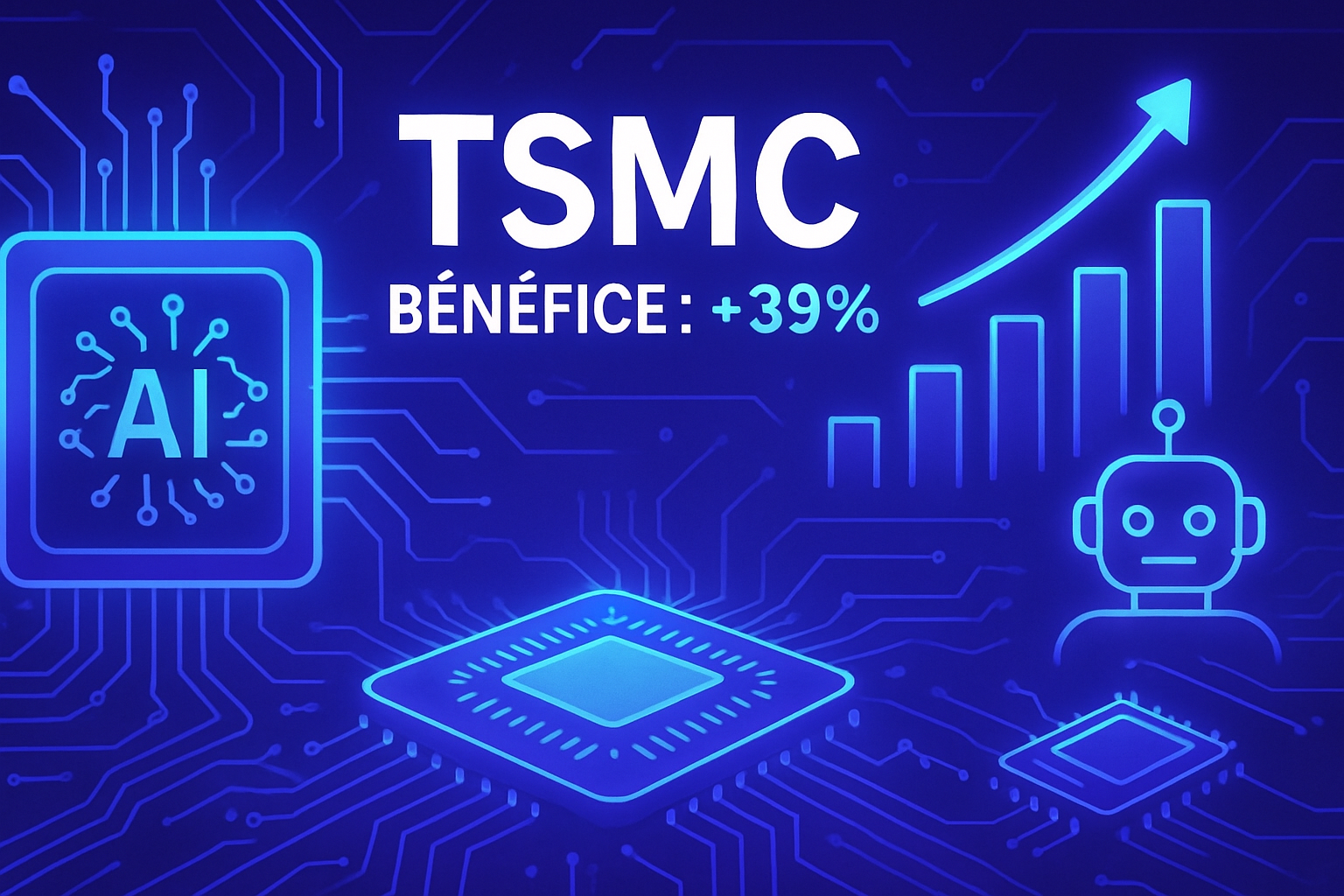TSMC hits a new striking milestone with rising profits. The remarkable performance of the company demonstrates an explosion in demand for artificial intelligence chips, thus confirming its status as the undisputed leader in the semiconductor sector. In the last quarter, TSMC’s net income recorded an increase of 39% compared to the previous year, a feat at odds with market forecasts. This development highlights the promising outlook related to the growing adoption of AI technologies, leading to exponential demand for advanced components.
Historic Record of TSMC
The Taiwan Semiconductor Manufacturing Company announced a jump of 39.1% in its profits for the third quarter, thus beating expectations. This remarkable performance is attributed to the considerable demand for artificial intelligence chips, a thriving sector. According to the published results, TSMC recorded a revenue of NT$989.92 billion, surpassing the NT$977.46 billion anticipated by analysts.
Financial Results Analysis
The net profit for this quarter reached NT$452.3 billion, also exceeding expectations of NT$417.69 billion. Revenues for the period from July to September increased by 30.3% compared to the previous year, reflecting strong sector growth. This result is all the more remarkable, as it represents a progression of 13.6% compared to the previous quarter, which had already set records.
AI Contribution and Growth Forecasts
The division dedicated to high-performance computing, encompassing areas such as AI and 5G technology, constituted the majority of sales, representing 57% of revenues. The focus on advanced chips, particularly those of 7 nanometers and below, has allowed TSMC to increase its market share, contributing to 74% of total wafer revenue.
C.C. Wei, CEO of TSMC, mentioned a growing adoption of AI models by consumers, leading to an increased demand for semiconductor products. Following this positive trend, the company has decided to raise its revenue growth target for 2025, estimating an increase in the range of 30%.
Commercial Risk Precautions
TSMC closely monitors the evolution of tariffs in the United States as negotiations continue for a lower reciprocal rate. Discussions have revealed that Washington is considering instituting specific duties on the semiconductor industry. Despite this, TSMC hopes to benefit from exemptions to these regulations.
The management of TSMC acknowledges the uncertainties related to these tariff policies, particularly in price-sensitive market segments. The company continues to assess and plan for the potential impacts that these measures may have on its operations.
Investments in the United States
In response to tariff uncertainties, TSMC is ramping up its investments in its facilities in the United States. This strategy is expected to reduce its exposure to tariff impacts. Such a move could translate into better resilience against fluctuations in the international market and the increasing demands of customers.
Trends in the AI Market
The rise of AI not only fuels TSMC’s growth but also comprehensively impacts the semiconductor sector. Companies like Huawei and Oppo are showing increasing interest in developing AI-driven technologies, illustrating the vitality and innovation of the market.
To learn more about these dynamics and competition in the semiconductor industry, the news also highlights the role of Washington in shaping new trade restrictions in collaboration with Tokyo.
Advancements such as the deployment of a new supercomputer, mentioned in this article, resonate with the growing importance of artificial intelligence in the modern technological landscape.
This favorable context, both for TSMC and the semiconductor sector, attests to the synergy between innovation, market demand, and growth strategies adopted by industry leaders.
Questions and Answers about TSMC and the Increase in Its Profits
What are the main factors that contributed to TSMC’s 39% profit increase?
The growing demand for artificial intelligence chips and the exceptional performance of the high-performance computing divisions have largely contributed to this increase, particularly from clients such as Nvidia and Apple.
How did TSMC surpass revenue forecasts in the third quarter?
TSMC reported revenues of NT$989.92 billion, exceeding estimates of NT$977.46 billion, primarily due to strong demand for advanced processors.
What percentage of TSMC’s sales comes from artificial intelligence and 5G applications?
In the third quarter, approximately 57% of TSMC’s sales came from its high-performance computing division, which includes artificial intelligence and 5G applications.
What is the impact of advanced chip technology on TSMC’s financial results?
Chips of 7 nanometers or less accounted for 74% of TSMC’s total revenue in the third quarter, indicating strong demand for more compact designs, improving processing power and efficiency.
How does TSMC forecast its revenue evolution for 2025?
TSMC has raised its revenue growth forecasts for 2025, expecting an increase in the range of 30% due to continued demand for products related to artificial intelligence.
What role do AI GPU customer orders play in TSMC’s recent profits?
Significant orders from AI GPU clients and high-end smartphone platforms have led to strong utilization of 3nm and 4/5nm technologies, reflecting the strength of TSMC’s financial results.
What are TSMC’s concerns regarding developments in customs tariffs in the United States?
TSMC is closely monitoring developments in customs tariffs in the United States, as this could have a significant impact on its market segments, particularly those sensitive to pricing.
How is TSMC preparing for potential impacts of tariff policies?
The company continues to assess and plan for the potential impact of tariff policies, and it is investing in facilities in the United States to reduce its exposure to tariff impacts.






